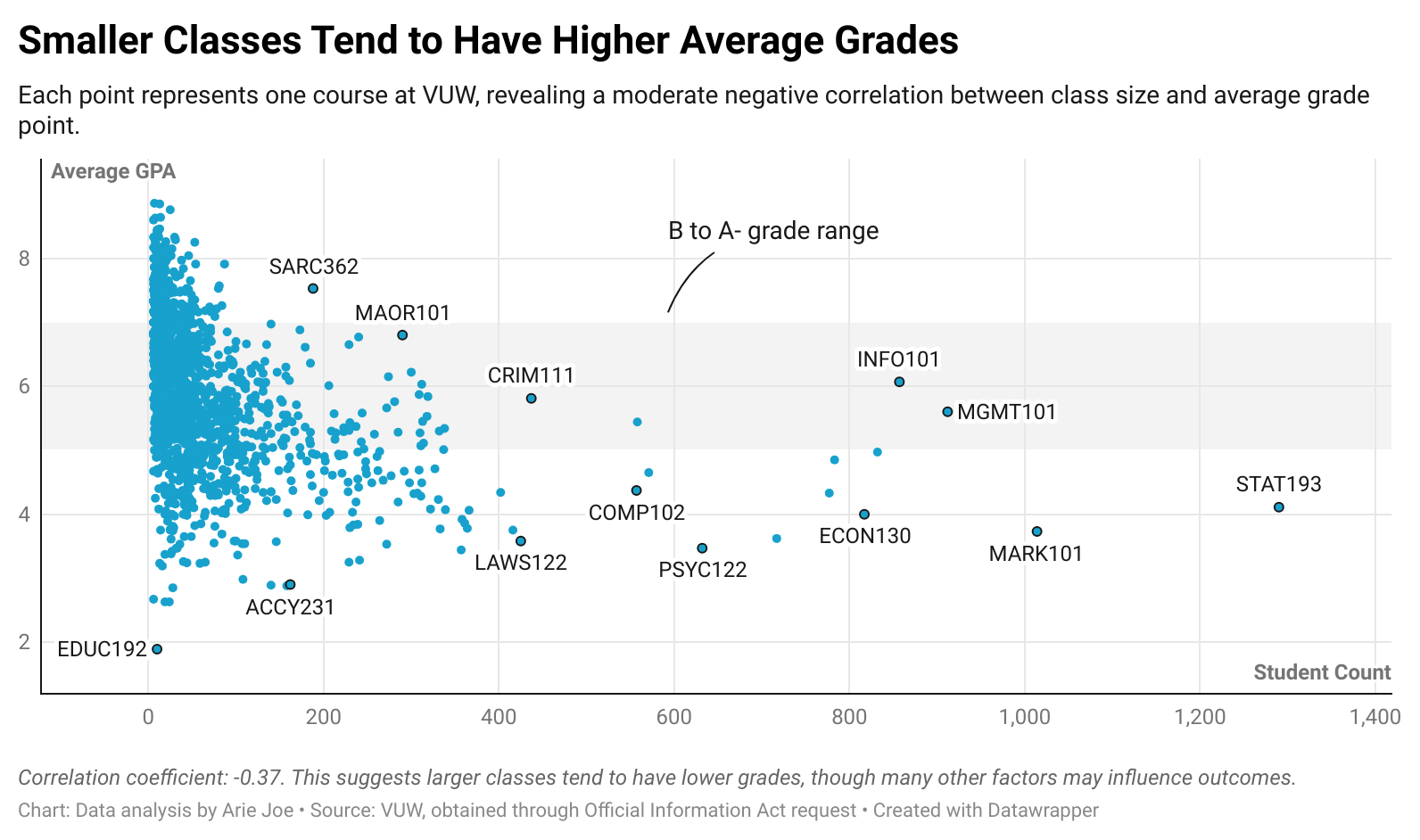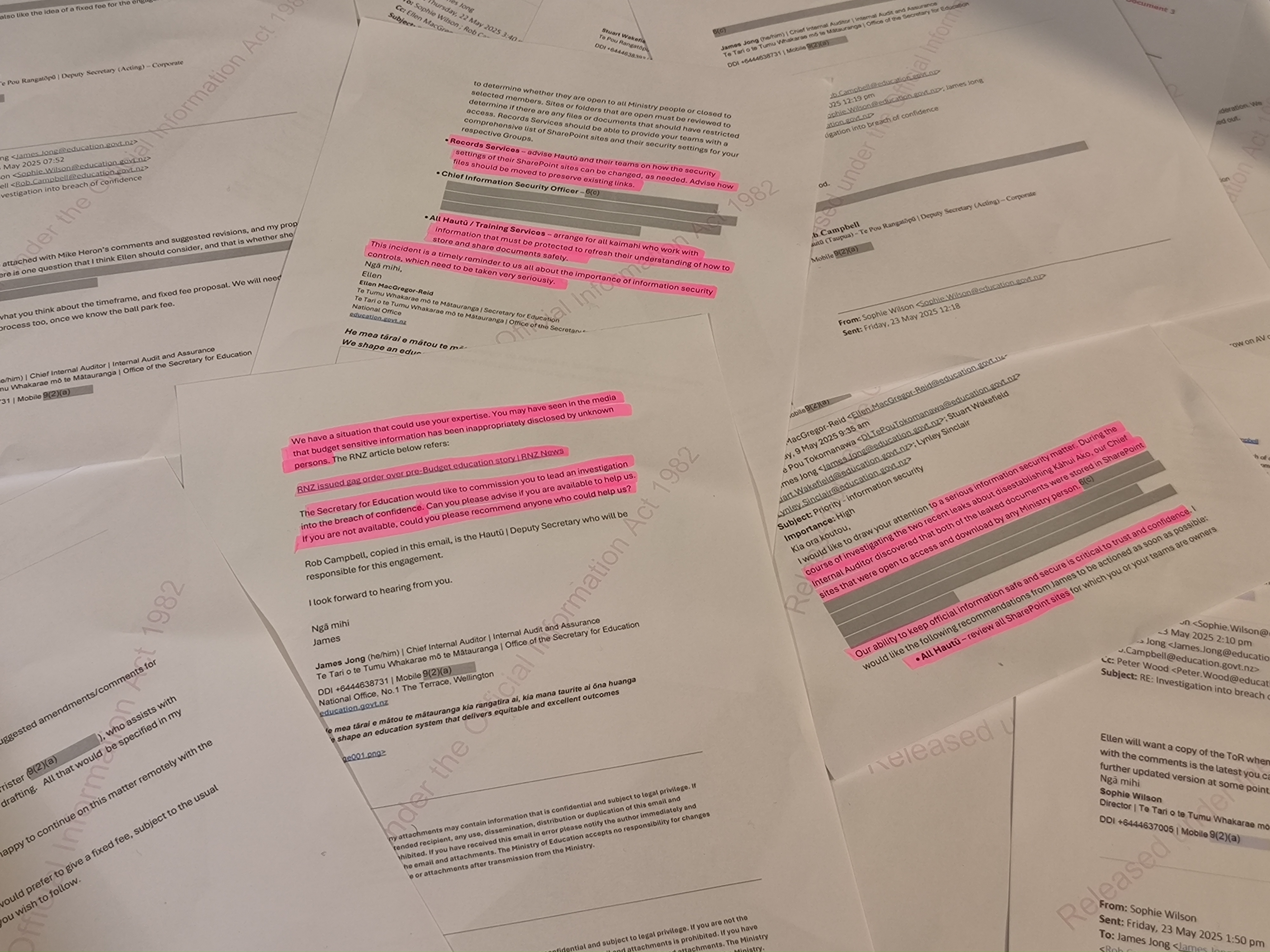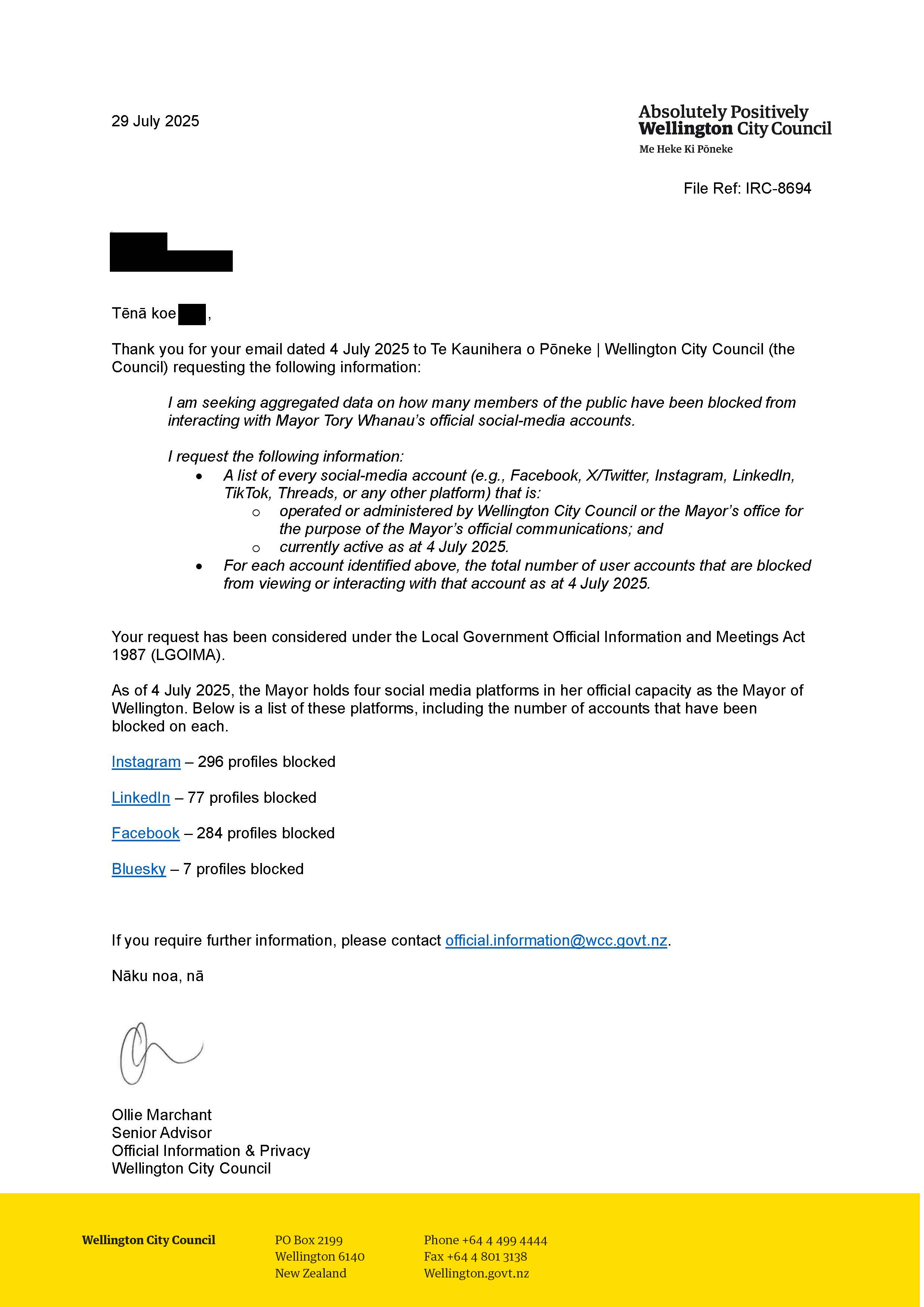Decoding the grade gap: What VUW's 2024 data reveals about academic success

For Best Viewing, please use a computer or a larger screen to properly view all charts in this article.
An analysis of more than 1,400 courses at Victoria University of Wellington (VUW) reveals striking patterns in how grades are distributed across the university. Smaller classes and postgraduate programs consistently show higher grade point averages.
According to data obtained through an Official Information Act request, nearly two-thirds of all courses offered at Victoria University in 2024 achieved "Above Average" or "High" grade classifications. The data, which includes every course offered during the 2024 academic year, provides a rare, comprehensive look into grading patterns at one of New Zealand's premier universities.
The Postgraduate Advantage
Postgraduate courses consistently outperform their undergraduate counterparts.
Postgraduate and advanced courses averaged a grade point of 6.8 — equivalent to a B+ or A- in most grading systems — compared to just 5.5 for undergraduate courses, roughly a B-. This disparity of 1.3 grade points represents nearly a full letter grade difference.
The Subject Divide
Not all academic subjects are graded equally. An analysis of subjects with at least five courses reveals substantial differences in average grades depending on what students choose to study.
Museum & Heritage Studies leads all subjects with an impressive 7.8 average GPA, followed closely by Educational Psychology at 7.7. At the other end of the spectrum, Pasifika Pathway courses averaged just 4.2, with Economics, Commercial Law, and Accounting all below 4.8.
This disciplinary divide largely follows the traditional split between humanities and STEM fields, with notable exceptions. Environmental Science courses, for example, averaged a strong 6.9 GPA despite their scientific focus.
Size Matters
Perhaps the most intriguing finding in the data is the clear relationship between class size and academic outcomes.
Statistical analysis shows a moderate negative correlation (-0.37) between the number of students enrolled in a course and the average grade, suggesting that smaller, more intimate learning environments may foster better academic performance.
The effect is particularly pronounced in very large classes, where courses with hundreds of students tend to have significantly lower GPAs than the university average.
Faculty Differences Reflect Broader Patterns
The university's various faculties and schools also show distinctive grading patterns, with some consistently outperforming others.
While Humanities & Social Sciences offers the most courses by far (528), it's the Health and Education faculties that boast the highest average GPAS. Commerce and Business disciplines typically show lower average grades.


